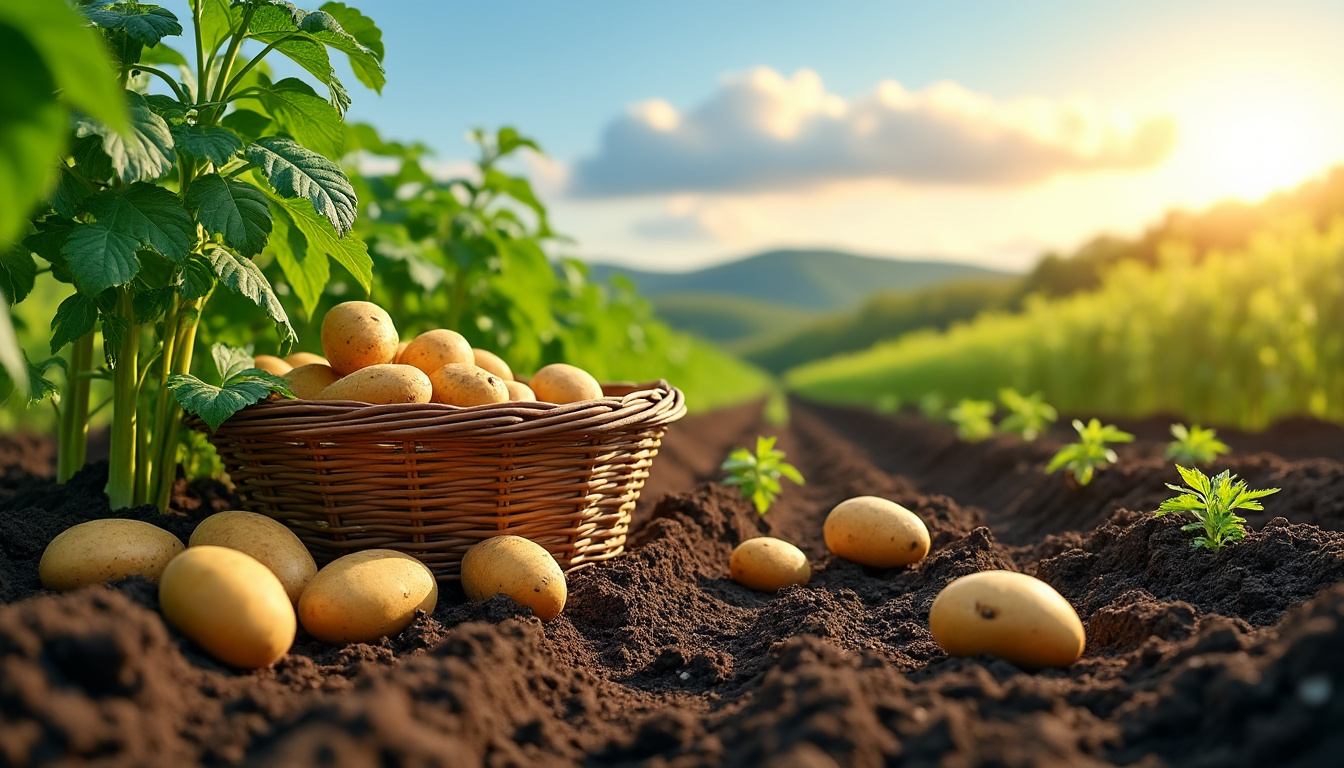Harvesting early potatoes at the right time can make a noticeable difference in their flavor profile and texture. Understanding the growth cycle of various potato types, recognizing the signs of maturity, and choosing the ideal moment to dig are key components to achieving a fantastic harvest. This guide explores the optimal timing for harvesting early potatoes, offering techniques and tips for maintaining both yield and flavor.
- Understanding Potato Varieties
- Signs of Maturity for Harvesting
- Techniques for Digging Up Potatoes
- Storing Harvested Potatoes
- Flavorful Potato Recipe Ideas
Understanding Potato Varieties
Early potatoes are a delicious addition to any garden, providing fresh flavors much earlier than their later-maturing counterparts. The primary types of potatoes include:
| Type of Potato | Color | Texture | Flavor Profile | Ideal Uses |
|---|---|---|---|---|
| Sweet Potatoes | Orange, Purple, White | Creamy | Sweet | Casseroles, Fries, Pies |
| Russets | Brown | Starchy | Neutral | Baking, Mashing, Frying |
| Red Potatoes | Red | Waxy | Slightly Sweet | Roasting, Boiling, Salads |
When determining when to harvest potatoes, it’s essential to consider the specific variety. Each type has a growth timeline that dictates when it will be ready for optimal flavor and culinary use.
Signs of Maturity for Harvesting
Harvesting at the right time ensures that the tubers developed their full flavor and nutritional value. Look for the following indicators:
- Foliage:** The leaves will turn yellow and begin to die back.
- Skin Set:** The skin thickens and adheres tightly to the flesh, signifying readiness.
- Tuber Size:** Potatoes generally achieve their full size shortly before harvest. Aim for a diameter of 2-3 inches for early potatoes.
- Environmental Conditions:** Dry, cool weather conditions make it easier to harvest without damaging the tubers.
Waiting too long to harvest can lead to issues such as rotting, sprouting, or pest issues, diminishing the quality of the crop.
Techniques for Digging Up Potatoes
Proper techniques are essential to avoid damaging the harvested tubers. Follow these steps for an effective harvest:
- Loosen the Soil: Start by loosening the soil around the plants with a garden fork.
- Dig Carefully: Insert the fork about 6 inches from the base of the plant and gently lift the soil.
- Harvest Tubers: Remove the potatoes carefully by hand to prevent bruising.
- Clean Off Excess Dirt: Shake off loose soil and use a brush to remove stubborn dirt.
When to harvest maincrop potatoes for the best yield
Storing Harvested Potatoes
Proper storage is crucial for maintaining the freshness of harvested potatoes. Follow these guidelines:
- Ideal Temperature: Store potatoes in a cool, dark location at 45°F (7°C) to 50°F (10°C).
- Humidity Control: Aim for around 80% humidity to avoid shriveling or rot.
- Avoid Refrigeration: Refrigerators can turn starch into sugars, negatively affecting flavor.
- Inspect Regularly: Check for damaged or spoiled potatoes and remove them promptly.
Flavorful Potato Recipe Ideas
Freshly harvested potatoes can be transformed into a variety of delicious dishes. Consider these recipe ideas to highlight their flavors:
- Classic Mashed Potatoes: Creamy and comforting, perfect as a side dish.
- Roasted Potatoes: Toss with herbs and olive oil for crispy, flavorful bites.
- Potato Salad: Combine with mayonnaise, celery, and herbs for a delightful summer dish.
- Potato Soup: A warming, creamy soup ideal for colder days.
FAQ
A: Early potatoes are typically ready for harvest about 70 to 90 days after planting when the foliage begins to yellow.
A: Look for yellowing foliage, thick skin, and satisfactory tuber size (2-3 inches in diameter).
A: If pest pressure is high, consider harvesting early to prevent further damage.
A: Store them in a cool, dark, and humid environment to maintain freshness.
A: It’s best to store different varieties separately, as their storage needs can differ.
Embrace the joy of harvesting early potatoes this season, and let each dish reflect the care invested in their cultivation. By following these guidelines, you will savor the fruits of labor in a way that truly celebrates their flavor.
















